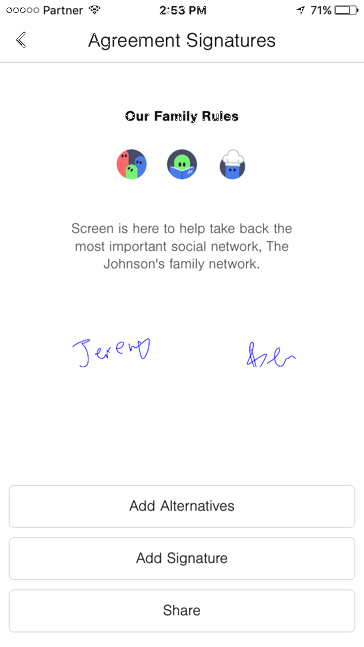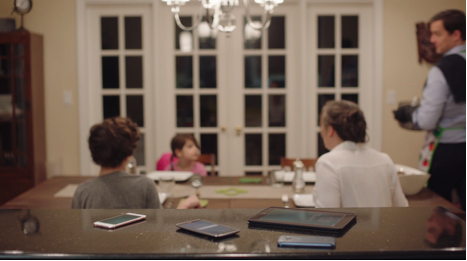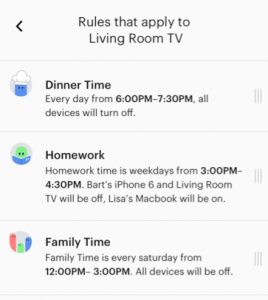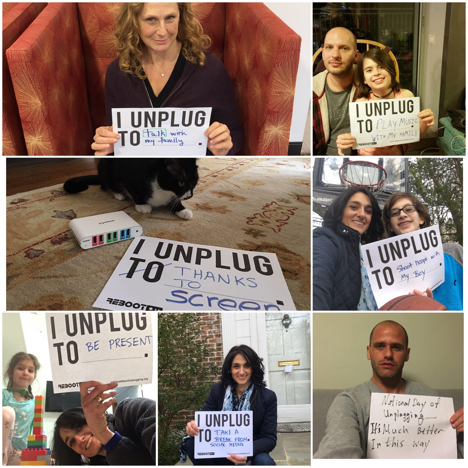Technology is ubiquitous. Who can escape it? We are drawn to technology in all its forms – phones, cars, TV, eyewear, etcetera. It is this pervasiveness of technology that makes it hard for us to disconnect so we can connect – to actually talk and interact with people and be truly present in the moment and not be glued to the screen.
This becomes more challenging for someone who has a family. Parents have to compete with the phone, TV, or a video game for their kids’ attention and time. Perhaps it is the other way around.
Tali Orad, CEO and Founder of Screen, talks about this device and how it helps families develop healthy screen habits to see how limiting screen time can increase overall happiness and productivity.
In The Photo: Tali Orad, Founder, and CEO of Screen. Photo Credit: Tali Orad
I’ve read that you have 3 kids and you felt like a bad cop for constantly reminding them to put down their screens. When did you realize that you needed to come up with a solution for this recurring problem?
Tali Orad: As a parent, I know how to pick my battles. Technology consumption was a constant battle in my family, but I should not fight it when there are so many parental control tools available to help me, right?! I was trying them all, however, none answered my family’s needs.
I was looking for a mobile first, multi-platform solution that would manage ALL of my kids’ devices regardless whether I was home or Wi-Fi was available. Plus, I needed something that would also manage the TV, PlayStation, and Chromecast we have at home. None of the solutions on the market answered my needs so I decided to create one.

In The Photo: Screen Box with getScreen Parent App. Photo Credit: getScreen.com
Prior to Screen’s commercial launch, did you try it out on your kids? What was their feedback?
T.O: We’ve been working with the Screen solution since day one, long before it was available to other parents. I did not just install Screen on my kids’ devices, we sat together as a family and discussed our technology schedule.
“When is homework time?” That means PC should be ON while the TV and phones OFF.
“When is our dinner time?” All devices MUST BE OFF including mine.
“When is electronic time?” We follow AAP [American Academy of Pediatrics] guidelines of no more than 2 hours a day.
After deciding on those rules, I put them into the system. It was actually my kids’ idea that we sign an agreement.
The first few days were fine, but then my kids tried to uninstall it. Nowadays kids are very smart. If they try really hard, they will find a way to uninstall the Screen app or to unplug the Screen Box. My kids, or any kid for that matter, usually start thinking how they can “beat the system” when Screen is limiting their use and affecting their daily routine. That’s when we decided at Screen that we could not always fight it, and we should tell that to the parents.
Screen solution includes several anti-tampering mechanisms that will inform the parents when their kids are trying to outsmart the system.
In my family today, we have less friction around electronic usage. I respect their time, and they respect the rules. My kids know that I can see what they are doing on their screens.When it’s time for homework, they focus on their homework. When it’s play time, I respect their privacy but still keep an eye and make sure they are safe.
In The Photo: Screen rules. Photo Credit: getScreen.com
According to a study conducted by Mayo Clinic, some of the problems with screen time are obesity, loss of social skills, and less time for play. How does Screen help parents deal with these problems and the way their children use screen time?
T.O: Too much screen time affects our children’s health (obesity is one), sleep, academic performance, social skills, self-esteem and more. Mostly because they are in front of an electronic device too much versus playing with friends, exercising, running around, doing arts and crafts or just being kids. With Screen, parents can block the device so kids will have no choice but to find something else to do.
We all know this advice is great in theory but hard in practice, so how do we make it happen?!
First, is by deciding together on the Screen time rules and make a commitment by signing the Screen Agreement. When kids take part in the decision, it is easy for them to follow and make the change.
Second, our board of advisors that includes parenting experts, psychotherapists, educators, and pediatricians all agree that we need to help our kids. By that I mean help kids think of alternatives to their screen time. For example, suggest alternatives for electronic gaming like playing Legos, riding a bike, jumping rope, and more. We should think together with our kids about their tech alternatives and add it to Screen’s agreement.
Remember that our kids were born to a life of technology. Don’t fight it – balance it.
___________
When a child’s device is blocked, he or she will see those alternatives. It doesn’t mean they will go shoot hoops now, but it will spark their thinking to go out and do something else.
Lastly, lead by example. Screen addiction exists with parents as well as with kids. Parents can install it on their device and block their usage when it’s family time or time for family dinner. Set an example.
In The Photo: Team Screen takes the challenge and unplugs for a weekend (Gonen Bronshtein/CTO, Yaniv Dayan/HW OPS, Tali Orad, and some Screen friends). Photo Credit: getScreen.com
Related article: “THE VISIONARY OF HABIT-FORMING TECHNOLOGY“
What makes Screen so relevant in this day and age? What behaviors of parents and kids are you trying to change or develop?
T.O: Electronic devices are all around us. They are accessible and fun. However, every day we are learning more and more challenges that parents and kids are facing due to too much screen time — sleep problems, brain and language development, academic performances, social development, and posture among others. These can be pretty scary!
While no one wants to be in a situation where they need to consider electronic rehabilitation, we at Screen provide parents and kids with the tools to manage and balance technology usage in their day to day life. Screen prevents screen addiction by teaching our kids time management and how to be a responsible tech user.
The Screen solution allows parents to set rules and boundaries and help them ensure that these are enforced. Set rules on specific times or just enable AAP’s recommendation of two hours a day. Kids will get a warning on their screens before time is up so they can get ready to close and transition to a screen-free activity. Screen helps parents and kids manage and balance their time on screens, so they won’t become screen addicts.
For a full mindmap containing additional related articles and photos, visit #limitscreen
The quality of the content that kids are exposed to is just as important as the amount of time they spend on screen. Will content filtering/screening be part of Screen in the near future?
T.O: Content filtering is o n Screen’s road map. Screen capacities that exist now enable parents to see what the kids are doing on their devices — if they are using a vault app on their phone or playing Minecraft versus doing homework.
n Screen’s road map. Screen capacities that exist now enable parents to see what the kids are doing on their devices — if they are using a vault app on their phone or playing Minecraft versus doing homework.
We at Screen believe that conversation between parents and kids is the key. We can block content, but they will find a way to get to that information. We prefer knowing about it rather than blocking and not knowing at all. Again, communication is the key.
Knowing they accessed apps or information that is not appropriate can bring parents and kids to discuss them. By conversing, we can ease their curiosities and answer the questions they may have.
What advice can you give to parents and would-be parents about monitoring screen times?
T.O: Remember that our kids were born to a life of technology. Don’t fight it – balance it. Embrace their need to use and communicate through their devices. Keep the communication with them open, and make sure to balance screen time and real life time. Screen helped my family do just that. I hope it will do the same to yours.
In The Photo: Screen family agreement. Photo Credit: getScreen.com
Recommended reading:“GRAVITY SKETCH APP AIMS TO “LOWER THE BARRIERS TO 3D LITERACY“













